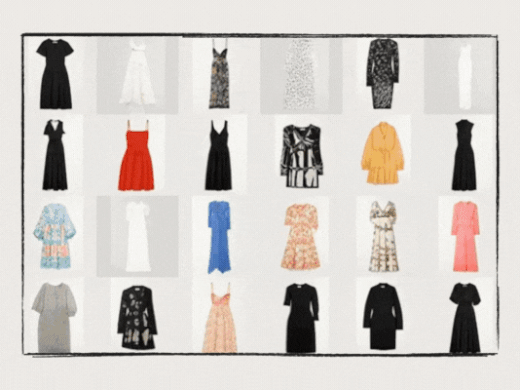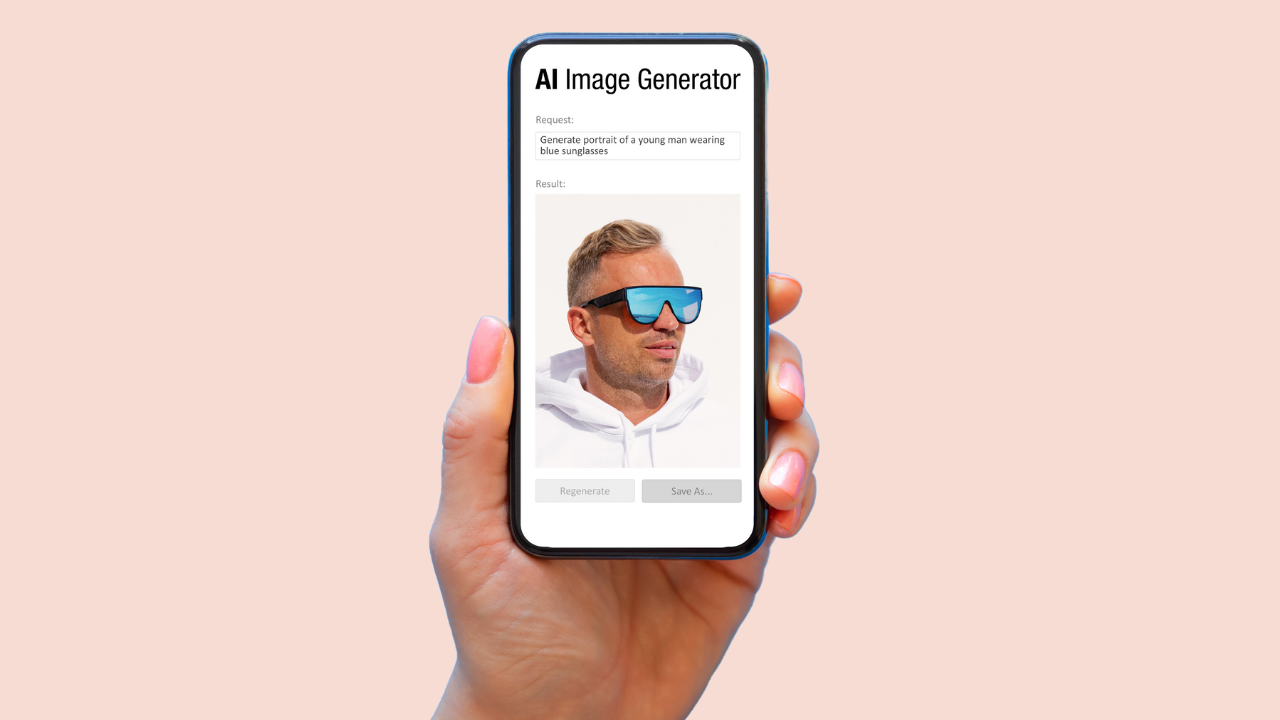We're standing at the forefront of a digital revolution, where everyday consumers are seizing unparalleled opportunities to create and innovate online, reshaping the landscape of entrepreneurship. We explored this topic in a recent blog post, looking at the opportunities for retail and consumer brands in a world where the average consumer will have creative capabilities beyond what is possible even for large numbers of specialists today.
The landscape is evolving with the development of peer-to-peer services, the democratisation of influence, and with consumer creativity being supercharged by cutting-edge technologies like generative AI. This isn't just a trend, it's an opportunity for companies to dive into a co-creative partnership with consumers, transforming them from mere buyers into creative collaborators.
Fashable is one example of how a company is harnessing the power of generative AI to supercharge content creation, allowing for the ability to participate in product design using technology. We chat to Orlando Ribas, Co-Founder of Fashable, a proprietary AI generated fashion technology that helps brands reduce the time spent on research, design, and content creation, while limiting the possibility of copyright infringements and allowing designers the time to focus on high-added-value tasks.
Orlando, what do you see as the biggest opportunities for the use of generative AI in content creation?
They are endless. I see generative AI bringing unique superpowers in content generation in the below ways:
Create before Production: One of the most compelling opportunities is the ability to generate new products before they are actually produced. This means companies can now test various content ideas, styles, and formats at a fraction of the cost and time it would traditionally take, enhancing inspiration, and creativity, and allowing for more data-informed decisions.
Promote in e-comm, social media and beyond: Generative AI is opening new frontiers for content promotion in the rapidly evolving digital landscape. AI-generated content can tailor messages and visuals to specific goals, catering to diverse audiences and platforms.
Exploring new business models: Businesses can explore entirely new business models thanks to generative AI. For instance, co-creation with customers or other players or via the creation of personalised products. Personalised content recommendations and targeted advertising can also be more effective when powered by AI, enabling companies to monetise content and user engagement in innovative ways.
Venturing into new product categories: Generative AI minimises risks and costs, one example is associated with entering new product categories. Companies can experiment with content related to new products, services, or markets without committing substantial resources upfront. This flexibility fosters innovation and adaptability in a rapidly changing market.
The reality is that today's content demands often exceed human capabilities. Generative AI steps in to fill this gap, providing scalability and efficiency in content creation. It allows us to explore uncharted territories, harness the potential of data-driven insights, and stay ahead in an increasingly competitive content landscape.
2. Do you see a future where brands are giving customers the ability to participate in product design through the use of your technology?
Absolutely, we envision a future where brands harness the power of our technology to enable customers to actively participate in product design. In fact, this future is not just a possibility; it will rapidly become a reality. In the near future, customers will have the opportunity to co-create digital products and wardrobes in collaboration with their most inspiring brands and influencers. This represents a significant shift from the traditional model of brands dictating product designs. With our technology, customers will be empowered to shape and customise their digital products to suit their unique tastes and preferences.
These digital creations won’t be limited to a single environment. Customers will be able to use their personalised digital products in various virtual worlds, gaming environments, and in real-life with the physical products. This versatility ensures that the products are not only a reflection of individuality but also functional across different contexts.
We believe that personalisation and co-creation will be success factors for future brands. Customers are increasingly seeking products that resonate with their identities and aspirations. Brands that embrace this trend and offer opportunities for co-creation will establish deeper connections with their customer base, resulting in better brand engagement.
In essence, the future we see, and are working on, is one where customers are not just passive consumers but active collaborators in the design process. This shift from a one-size-fits-all approach to a personalised, co-created model will represent a significant transformation in the relationship between brands and their customers. It’s an exciting evolution that not only enhances customer satisfaction but also drives innovation in product design and development.
3. Have any of your clients used your product to allow customers to have power over the design?
At this stage, our clients have not yet employed our technology to give customers that option, but we are developing a new tool to facilitate such co-creation capabilities. This transition will occur gradually, as it requires the preparation of the entire supply chain to fully embrace the new co-creation process. We believe this evolution will begin with influencers and subsequently extend to all customers.
4. We’d love to hear how you are currently working with retail and consumer brands. Any great case studies come to mind?
One notable collaboration has been with Wrong Weather, for their luxury segment. We assisted in the launch of their innovative “futurable” collection, where they sell products on-demand only. Additionally, we are actively engaged with various other brands in diverse use-cases, which we anticipate sharing publicly in the near future. Besides co-creation, these collaborations include:
Inspiration: We’ve been working with brands to harness generative AI for inspiration, helping them explore new creative horizons.
Content creation for beauty: Our technology has been leveraged in the beauty industry to generate captivating content that resonates with consumers.
Limited edition collection with on-demand production: Some of our clients have utilised our expertise to launch limited edition collections with efficient on-demand production processes.
Content generation for e-commerce and secondary marketplaces: We are assisting brands in automating content generation for e-commerce platforms and secondary marketplaces, streamlining their marketing efforts with more inspiring images. With one-click brands can have the same cloth in multi-regional and on various body-shaped persons, to be more aligned with the brand audience in different regions.
These are just a few examples of how generative AI can have endless applications across various segments. Soon we hope to share more exciting developments as we continue to collaborate with brands to push the generative AI boundaries.
In wrapping up our discussion with Orlando, it's evident that we're on the cusp of a transformative era in retail and consumer brand engagement. The growth of generative AI is not just a trend but a gateway to unimaginable creative possibilities. The implications of this shift are vast and varied, from exploring new business models to venturing into uncharted product categories. As brands begin to embrace this technology, the line between producer and consumer blurs, ushering in an era of personalised, co-created products that resonate deeply with individual preferences and identities, revolutionising how products are conceived, designed, and marketed.
To be a part of this exciting journey, we encourage retailers and brands to think about how they can embrace this shift and explore new technology that can help in reshaping their approach to product development and customer engagement. If you’re interested in exploring how you can use this as an opportunity to redefine your relationship with consumers and lead the way in this new creative frontier, get in touch with us here.


